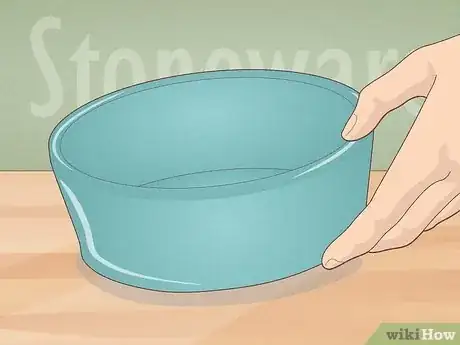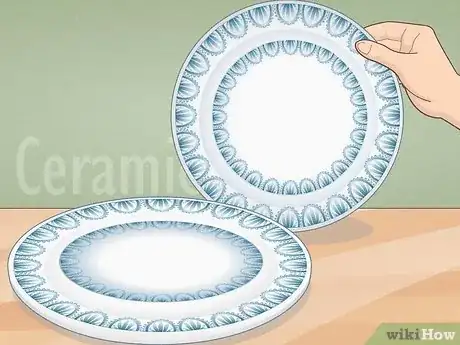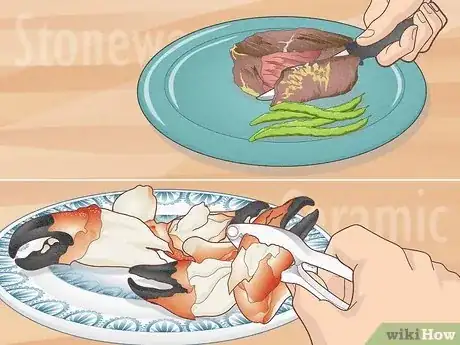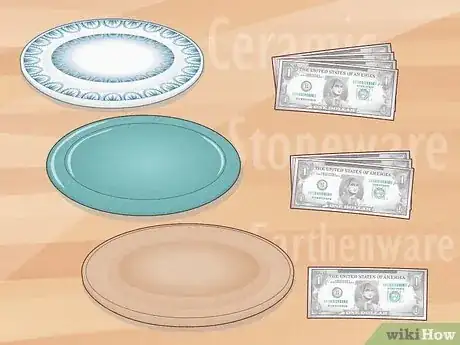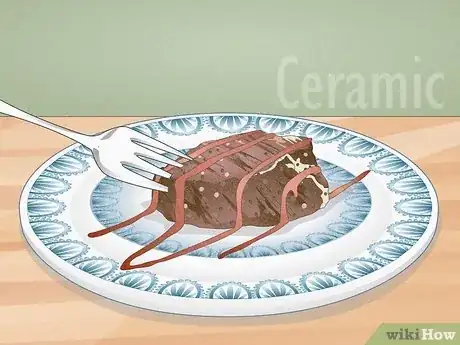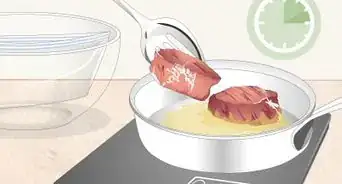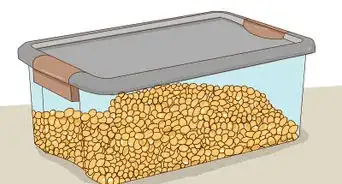This article was co-authored by Deanna Ranlett and by wikiHow staff writer, Luke Smith, MFA. Deanna Ranlett is a Pottery and Ceramics Professional and the Owner of Mudfire Inc. in Decatur, Georgia. With more than 22 years of experience in the ceramics industry and eight years of experience owning a studio, they specialize in glaze formulation, firing ceramic and pottery pieces, general clay projects, and screen printing for ceramics. Deanna holds a BFA in Ceramic Arts and Ceramics from Georgia State University.
There are 7 references cited in this article, which can be found at the bottom of the page.
You see the word “stoneware” plastered on kitchenware of all sorts, from casserole dishes to plates and mugs. But what is stoneware, exactly, and how does it compare to other kinds of ceramic dishes? And what is ceramic, for that matter? Is one better than the other? We’ll fill you in on the key traits of stoneware and other ceramics, their primary differences, and which you should pick up to complete that dining set.
Things You Should Know
- Stoneware is a type of ceramic that’s non-porous, watertight, durable, and is often used to make cookware and other dishes.
- Ceramics is a broad category of materials, but includes items made of natural materials (like clay) that have been shaped for use..
- Choose stoneware for a versatile, cost-effective, visually appealing and reliable cooking and dining material.
- Pick up porcelain dinnerware as a pricier but more durable option, or use earthenware dishes if you don’t mind a more delicate material at a lower price.
Steps
Key Differences
-
1Durability: Stoneware stands up well to daily use, making it well-suited for cooking and eating. It’s often dishwasher and microwave safe, and tends to resist cracks or chips.[5] Porcelain is the most durable of the lot, though, at least in terms of brute hardness.[6] Earthenware, however, tends to chip and crack easily.
- Always check the manufacturer’s specifications before microwaving or baking and ceramic dish.
-
2Appearance: Stoneware made for regular use often has a smooth, glossy, pleasant appearance. Think those drool-worthy Le Creuset crocks. Stoneware comes in many colors and forms, from dinnerware to cooking dishes, and can often serve as the centerpiece of any meal.[7]
- Earthenware is often unglazed and usually comes in the form of terracotta pots, which have a rough, reddish finish.
- Porcelain is most often white and glossy, and sometimes comes with additional, painted embellishments.
-
3Use: Stoneware is often used for day-to-day cookware and other dishes, like plates, mugs, and bowls, since it’s watertight and holds heat well.[8] Porcelains lean more toward the dinnerware side of things, and less toward cookware, but are also a good bet for mugs, plates, and dishes. Earthenware, meanwhile, is too porous, heat-sensitive, and prone to chipping to be of much use in the kitchen.
- Not all stoneware is suited for high temperatures in the oven, so check the label or manufacturer’s specifications before you put it under the broiler. In addition, most stoneware can’t withstand direct heat like burners or grills.[9]
-
4Price: Stoneware and porcelain vary in price, but are generally more expensive than alternative materials like stainless steel, plastic, and glass.[10] Earthenware is often less expensive, but also has fewer uses in the kitchen (it typically shouldn’t go in the oven, microwave, or dishwasher, for instance) and is generally less durable.
Which should you choose?
-
1Choose stoneware for versatile and durable everyday use. If you’ve got a little money to spend, definitely drop it on the stoneware. It’s visually appealing, great for baking and cooking, and, best of all, is perhaps the most versatile of the lot. While it’s not quite a durable as porcelain, what it might lack in toughness it makes up for in affordability.[11]
-
2Go for porcelain for more durable, but pricier, kitchenware. Porcelain and stoneware are very similar, but stoneware just edges out porcelain when it comes to versatility and price. For that reason, we recommend choosing porcelain for your fancier dining sets, like a posh set of china to bring out on holidays or other big occasions.[12]
-
3Pick up earthenware for budget dinnerware. Sorry, earthenware. You’re just outclassed in the kitchen! That said, earthenware can make for lovely dinnerware sets you might pick up on the cheap—at least, relatively cheap. Just be sure to handle with care. Earthenware is also indispensable when it comes to planting greenery in terracotta pots, or adding some sculptural decor to your home.[13]
- Note that many earthenware dish sets are bespoke, or have been meticulously decorated, which may up their value relative to a more plain earthenware set.
References
- ↑ https://delftsaardewerk.nl/en/learn/193-types-of-ceramic-an-overview-of-earthenware-stoneware-and-porcelain
- ↑ https://www.thecrucible.org/guides/ceramics/#2nd
- ↑ https://www.floridamuseum.ufl.edu/histarch/ceramic-types/introduction/
- ↑ https://www.thecrucible.org/guides/ceramics/#2nd
- ↑ https://www.simplyrecipes.com/guide_to_cooking_with_stoneware/
- ↑ https://kdvr.com/reviews/stoneware-dinnerware-sets-vs-porcelain-vs-bone-china/
- ↑ https://www.simplyrecipes.com/guide_to_cooking_with_stoneware/
- ↑ https://www.delightedcooking.com/what-is-stoneware.htm
- ↑ https://www.simplyrecipes.com/guide_to_cooking_with_stoneware/
